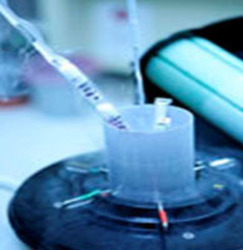Cryopreservation is a process where cells or whole “tissues are preserved by cooling to low sub-zero temperatures, such as (typically) 77 K or −196 °C (the boiling point of liquid nitrogen.
At these low temperatures, any biological activity, including the biochemical reactions that would lead to ,is effectively stopped. However when cryoprotectant solutions are not used, the cells being preserved are often damaged due to freezing during the approach to low temperatures or warming to room temperature.

Human Oocyte cryopreservation is a new technology in which a woman’s eggs (oocytes) are extracted, frozen and stored. Later, when she is ready to become pregnant, the eggs can be thawed, fertilized, and transferred to the uterus as embryos.
Cryopreservation for embryos are used for embryo storage, e.g. when in vitro fertilization has resulted in more embryos than is currently needed.